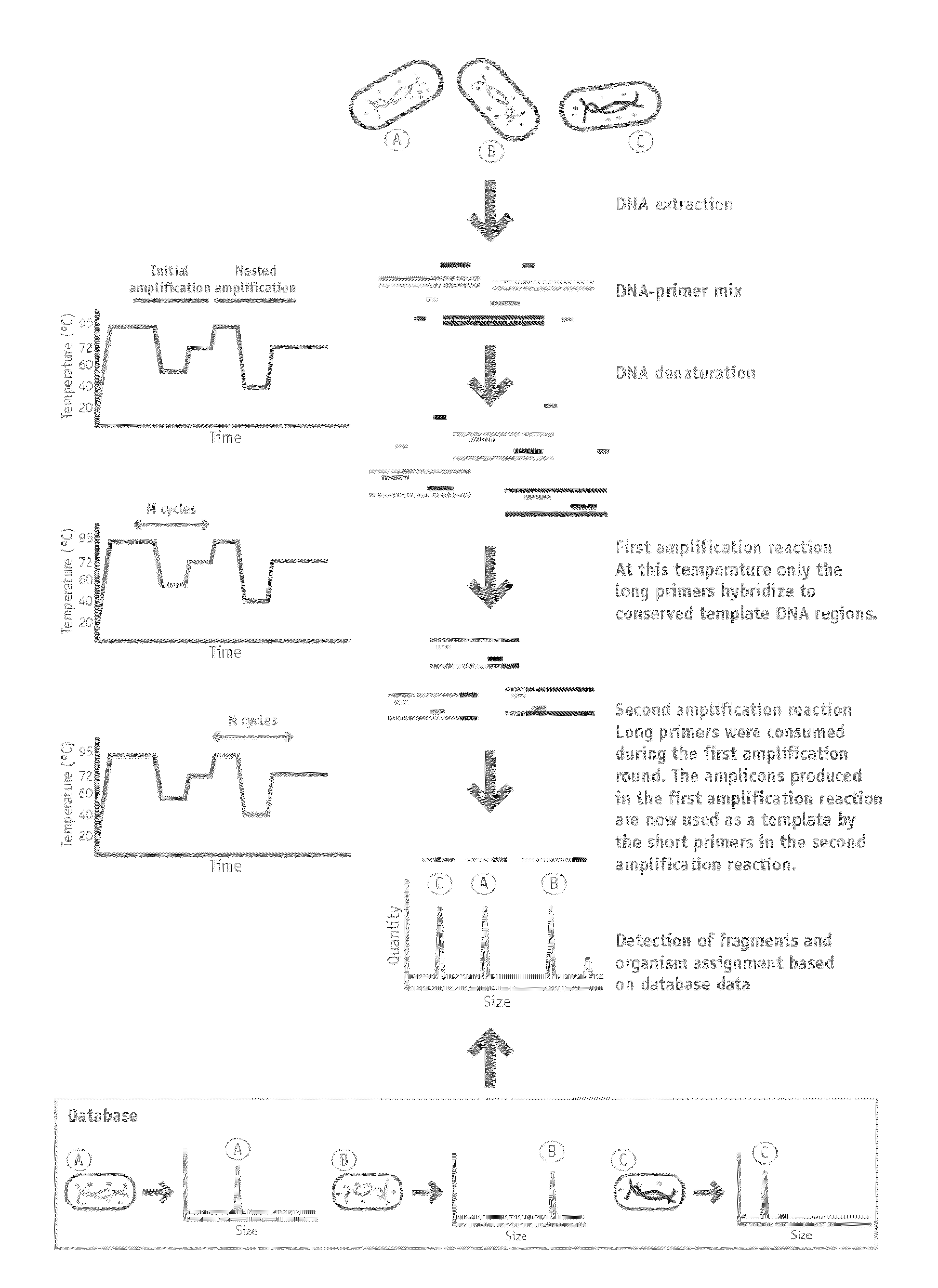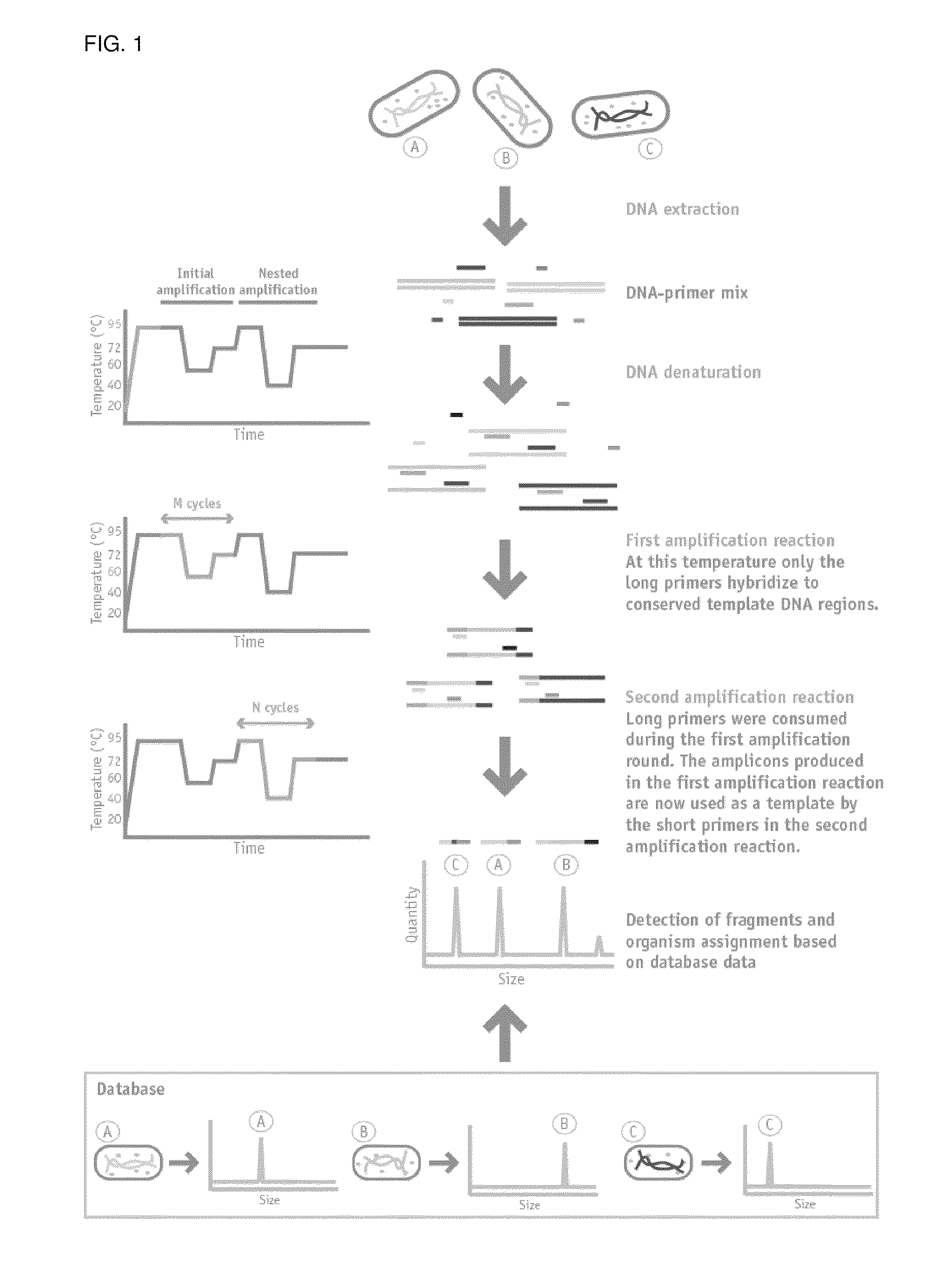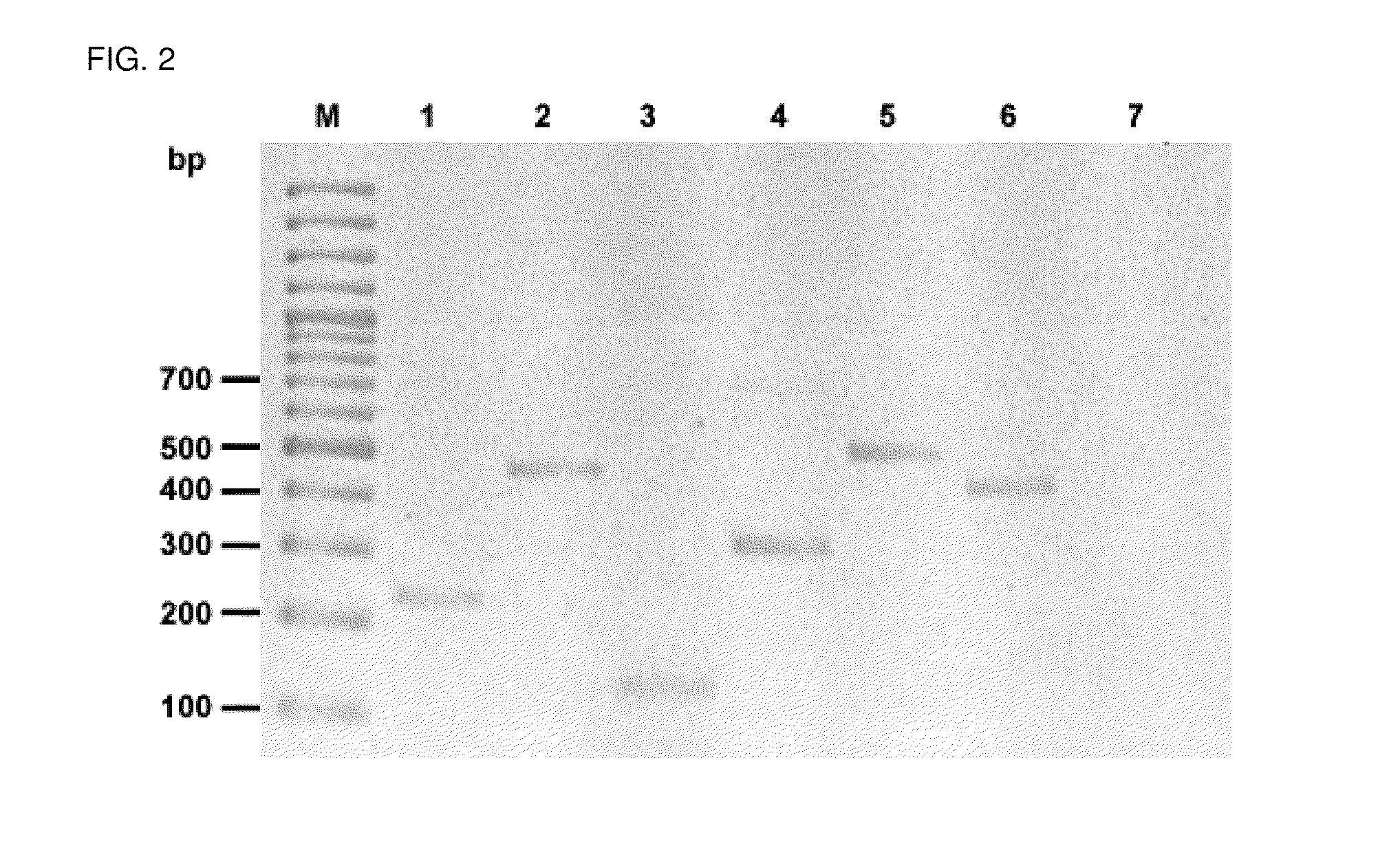Nested Multiplex Amplification Method for Identification of Multiple Biological Entities
a biological entity and multiplex technology, applied in the field of bioinformatics and molecular biology, can solve the problems of limited discrimination capacity, high set-up cost, and limit the application of the method, and achieve the effects of reducing the number of oligonucleotide primers, high multiplexing capacity, and remarkable discrimination capacity
- Summary
- Abstract
- Description
- Claims
- Application Information
AI Technical Summary
Benefits of technology
Problems solved by technology
Method used
Image
Examples
example 1
[0092]The method described herein was used to identify each of the following bacteria: Burkholderia vietnamiensis strain G4, Burkholderia xenovorans strain LB400, Escherichia coli strain ATCC 25922, Pseudomonas aeruginosa strain ATCC 27853, Pseudomonas putida strain KT2440 and Vibrio cholerae strain 0395.
[0093]Nested multiplex PCR in a single closed tube was performed from a sample consisting of a dilution of a bacterial colony or an overnight liquid bacterial culture. A single colony or 1 ul of liquid culture was resuspended in 150 uL or 300 uL of nuclease-free water.
[0094]1 to 4 uL were used for PCR amplification in a total volume of 15 uL, containing 20 mM Tris-HCl (pH 8.4), 50 mM KCl, 2 mM MgCl2, 200 mM of each deoxynucleoside triphosphate, 0.01 pmol of each long primer, 1 pmol of each short primer and 1.2 U of Platinum Taq DNA polymerase (Invitrogen).
[0095]The PCR amplifications were carried out in an Applied Biosystems 2720 thermal cycler as follows: after an initial denaturat...
example 2
[0098]Same as example 1, except that amplification was performed on bacterial suspensions consisting of a mixture of 2 highly related bacteria. As it can be seen in FIG. 3, the method of the present invention achieves the specific amplification of each target, thus allowing the simultaneous identification of highly related biological entities from a binary mixture. In FIG. 3, lane M is 100 bp ladder, lane 1 is Burkholderia vietnamiensis strain G4 plus Burkholderia xenovorans strain LB400, lane 2 is Pseudomonas aeruginosa strain ATCC 27853 plus Pseudomonas putida strain KT2440 and lane 3 is the negative control).
example 3
[0099]Same as example 2, except that amplification was performed on a bacterial suspension consisting of a mixture of 5 species of bacteria (Escherichia coli strain ATCC 25922, Burkholderia vietnamiensis strain G4, Vibrio cholerae strain O395, Burkholderia xenovorans strain LB400 and Pseudomonas putida strain KT2440). In this example the PCR amplification products were separated and detected using the capillary electrophoresis system ABI 3100. As it can be seen in FIG. 4, the method of the present invention achieves the specific amplification of each target, thus allowing the simultaneous identification of multiple biological entities from a complex mixture.
TABLE 1Oligonucleotide primer sequences used in all the examplesof the present invention.AmpliconTm sizelD‡Oligonucleotide sequences†(° C.)Target(bp) #LP15′-62.Conserved 23S680AAAGACTTAGACTTCTCAGTGAACCAGTA9rRNA sequenceCCGTGAGGGLP25′-CGTTACATCTTCCGCGCAGG64.Conserved 23S5rRNA sequenceSST6FAM-5′-GACTTAGACTTCTCA44.Subsequence of 4th...
PUM
| Property | Measurement | Unit |
|---|---|---|
| Temperature | aaaaa | aaaaa |
| Temperature | aaaaa | aaaaa |
| Temperature | aaaaa | aaaaa |
Abstract
Description
Claims
Application Information
 Login to View More
Login to View More - R&D
- Intellectual Property
- Life Sciences
- Materials
- Tech Scout
- Unparalleled Data Quality
- Higher Quality Content
- 60% Fewer Hallucinations
Browse by: Latest US Patents, China's latest patents, Technical Efficacy Thesaurus, Application Domain, Technology Topic, Popular Technical Reports.
© 2025 PatSnap. All rights reserved.Legal|Privacy policy|Modern Slavery Act Transparency Statement|Sitemap|About US| Contact US: help@patsnap.com



